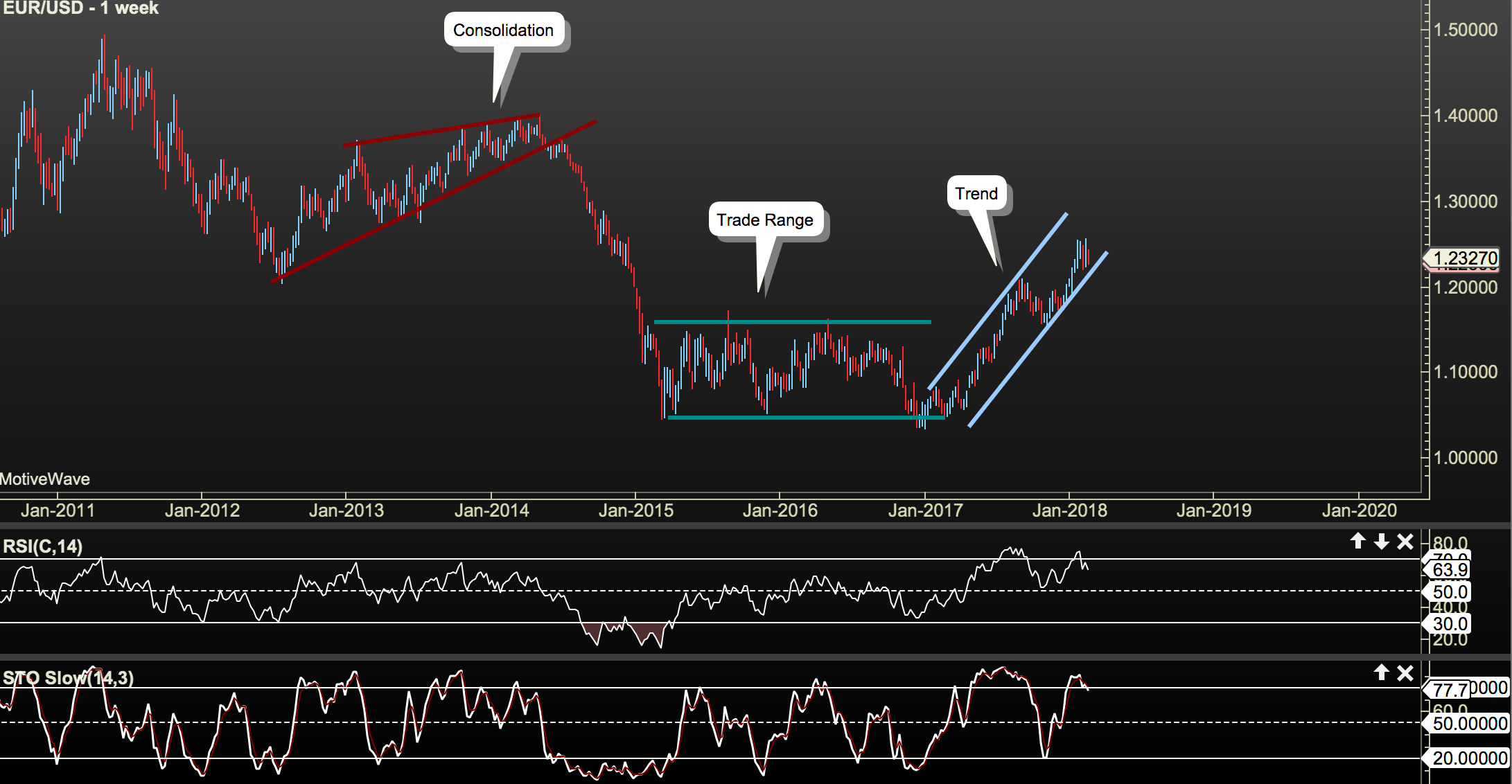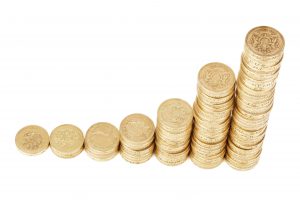
Learning how to trade forex is not difficult if done the right way. Whether you are just beginning to trade forex or already are a seasoned trader, these 5 essential forex trading skills that are the hallmarks of a consistently successful trader.
These skills include the understanding of the forex market phases, solid money management, proper risk management, trading mentality and trading evaluation. In the following paragraphs I am going to walk you through each skill step by step.
1. Recognizing Correctly the 3 Forex Market Phases
The forex market alternates between three phases:
- Trend – moving in a direction (bullish or bearish trend),
- Range Bound – going up and down within a range and
- Consolidation – moving into an increasingly narrowing range like a triangle.

While it might not be the obvious, this is the number one reason traders and trading systems lose money.
The Trend is Your Friend, Is It? – I am perfectly sure you have heard by now the trend is you friend. However, it can be your enemy too, if you are using ranging market strategies in a trending market.
Point in Case – While a simple trend following strategy like the two moving average crossover strategy (fast average crosses slow average) works brilliantly in trending markets, the strategy fails miserably in ranging market conditions. The reason is due to many crossovers (whipsaws) in a ranging market that cause the system to give many false signals that in turn erode the trader’s capital. At the same time indicators like Stochastics that work well in ranging market conditions, fail in trending market conditions, due to many premature oversold or overbought signals that erode the trader’s capital too.
Different Market Phase, Different Strategy – Understanding the market phases you currently trade, is one of the most critical trading skills a consistently successful trader must acquire. Then, by deploying specific strategies for each market phase, you can benefit in almost all market conditions or at least minimize the losses in unfavorable market conditions. Some of the best analysis tools to identify market phase include the ADX indicator, 200, 100 and 50 period moving averages, Bollinger Bands and Elliot Wave analysis while the best course in my list to help you with this is Urban Forex’s Mastering Price Action Course.
2. Proper Money Management
I have found through my nine years in trading that one of the best money management tactics is to never risk more than 3% of you available trading capital in one trade.

Compounding – Available means that you can utilize compounding in you trading equity, both in successive wins and successive losses to you benefit by always adjusting you lot size to create trades with maximum capital at risk at 3% of you current balance.
Point in Case – let’s say you trading capital is $100,000 and you have identified a long opportunity in EURUSD with 60 pips take profit and 20 pips stop loss. The 20 pips must somehow equal 3% of you trading capital, meaning $3,000, dollars in absolute terms. The EURUSD pair has a pip cost of $10. The way to achieve this is to open approximately 15 lots that can also be divided by three and results in three 5 lot trades ($3,000/20/$10=15).
Note: I prefer to also include the commissions so, assuming an average 2 pip spread, this could result in 13.5 lots (rounded downwards)to open, divided to three 4.5 lots which would cost around $2,970 slightly less than $3,000 in the worst scenario which is within our parameters.
Reward to Risk – Of course, you have heard that you should strive to take trades with reward to risk above 2:1 or even 3:1 and more. Well this is indeed important, but it has to be also realistic, meaning that the current market structure and volatility can support such trades, otherwise having large take profit targets or small stop loss target to engineer the reward to risk ratio can be unreasonable and hit your performance and psychology.
3. Trading Mentality
Two important points that can give you peace of mind.

a. Have a Specific Target – Very often a forex trader begins his journey in trading without a specific target of maximum percentage return or loss per day, week and month. As a result, the trader doesn’t know when to stop after a good or bad trade. It is therefore important to set a range of annual percentage returns and then divide this figure into months weeks and even days depending on you trading style. It’s important that you take into account deviations in these intervals as they only represent small deviations to you larger picture in terms of annual performance.
b. Accept the Randomness of Wins and Losses – Another critical point, that baffles people from all professional and academic ranks is the acceptance of the fact that the outcome of each trade is independent from the outcome of the previous trade and the fact that any outcome might happen. Let’s take a closer look.Assuming you have a trading strategy that has a 70% winning ratio, you can assume that over a large sample of trades 70% will have a successful outcome while 30% will have a negative outcome. However, you never know the distribution of you wins and losses. Maybe at first you have three successive losses and then seven successive wins, or you have seven successive wins and then three consecutive losses.
What happens here is that if someone does not acknowledge that the distribution of his wins and losses is random, extreme fear or greed can cause the trader to abandon his system before a sufficient number of trades is executed, or even worse to risk the entire trading capital on the next trade in a state of euphoria only to lose it all.Therefore, it is critical that you have a certain target in trading, written on a place you can always read it and that you accept beforehand the random distribution of each trade’s outcome and the fact that anything can happen once you are in trade. This attitude will help you focus on what you can do, before and after a trade.
4. Dynamic Risk Management
Risk vs Money Management – Many people confuse risk management with money management. Let me get this straight first. Money management refers to how much you are willing to risk per trade, whether this will be an absolute amount or a fixed percentage of you trading capital and the planned reward to risk ratio of you trade. Risk management on the other hand involves the aspects of managing you trade once you’re in the market. How you trail you stop loss, when you take profits, when you add to you positions and when you hedge you position.
Dynamic Risk Management – One of the most successful dynamic risk management methods I have used is the following. Opening thee equal lots in a trade and when the market moves in my favor by a small amount always close the first third. Then when the market moves further in favor by the same distance as my stop loss I close the second third. Then I trail the stop loss of the third position as far as the market allows me. In this way I am always a winner. I always take money when the market gives it to me and at the last step I have zero risk and unlimited reward to risk ratio.
5. Keeping a Trade Journal for Evaluation
Self Reflection and Evaluation – For many beginners and even intermediate traders and myself this has been the most difficult to grasp as the benefits of keeping a trade journal for evaluation are not easily understood in advance. By keeping a trading journal that allows you to go back in time and evaluate you results, reactions and emotions is an invaluable insight in our strengths and weakness.

Eliminate Weakness, Focus on Strengths – A famous trader once said, I know when I see a promising trader by whether he is keeping a trading journal. While common wisdom says focus on improving you weaknesses, new wisdom suggests focus on you strengths and eliminate you weaknesses. What’s the most important is that as you go back in time and review each trade, the chart, the analysis, the follow-up, the emotions and the conclusion, you can identify you weaknesses to eliminate them and focus on improving you strengths instead.
The Essential Forex Trading Skill Set – Make It Your Trading Short List
These trading skills are what makes a trader consistently successful in an ever-changing, volatile and unpredictable market environment.
As far as I am concerned, anyone practices these skills can become a very successful and consistent trader with a bank account to prove it.